Plants the Native Americans Used: Hoary Puccoon (Lithospermum canescens)
Perhaps you’ve come across the word Puccoon before? The popular herb Goldenseal is also known as yellow puccoon.
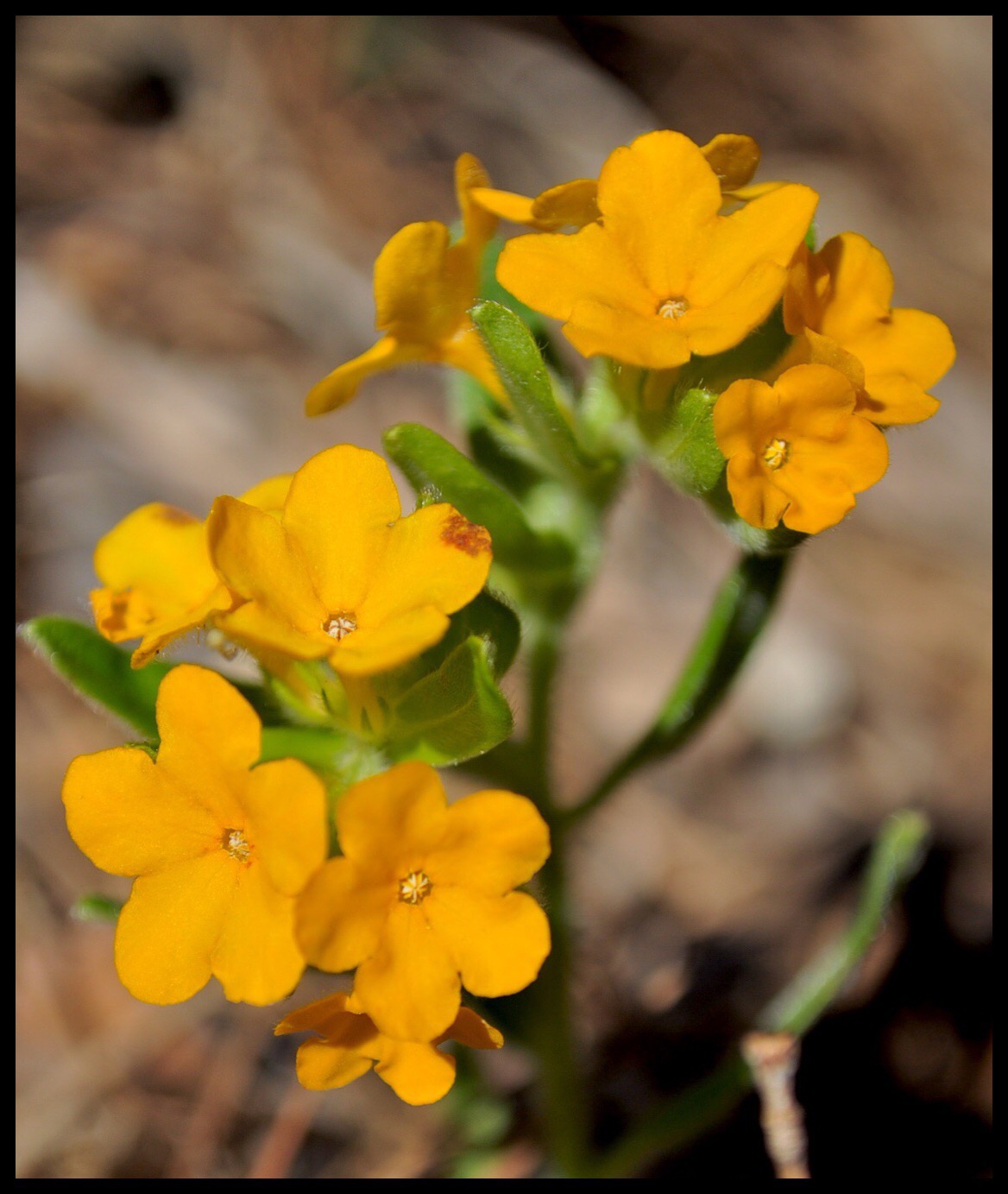
There is poetry in many wildflower names. "Hoary" means gray or white with age, and this plant certainly does have such hairy foliage. "Puccoon" is from the Algonquian word "poughkone" and refers to plants that yield a purple, red, or yellow dye. (1)
The hoary puccoon is so named because the root has a red dye. It is also called Hoary gromwell, orange puccoon and indian paint (2).
I discovered this bright beauty last spring as I was walking on our Western cliff edge. Of course, any colorful flowers catch my eye as I am scanning the ground for mushrooms, arrowheads, tracks, plants, neat rocks and flowers.
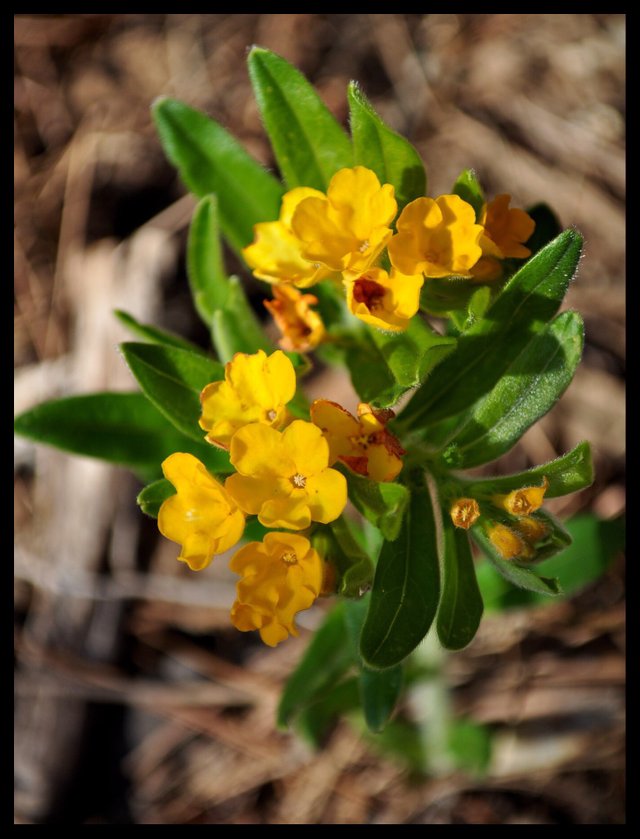
I was immediately drawn to its yellow flower, a rarity in these parts in spring.
Upon closer examination, I noticed the hairy, almost sticky leaves. My Peterson Field Guide easily directed me to the ID of hoary puccoon.
As I was out picking redbud blossoms today, I spied a hoary puccoon and was drawn to it!
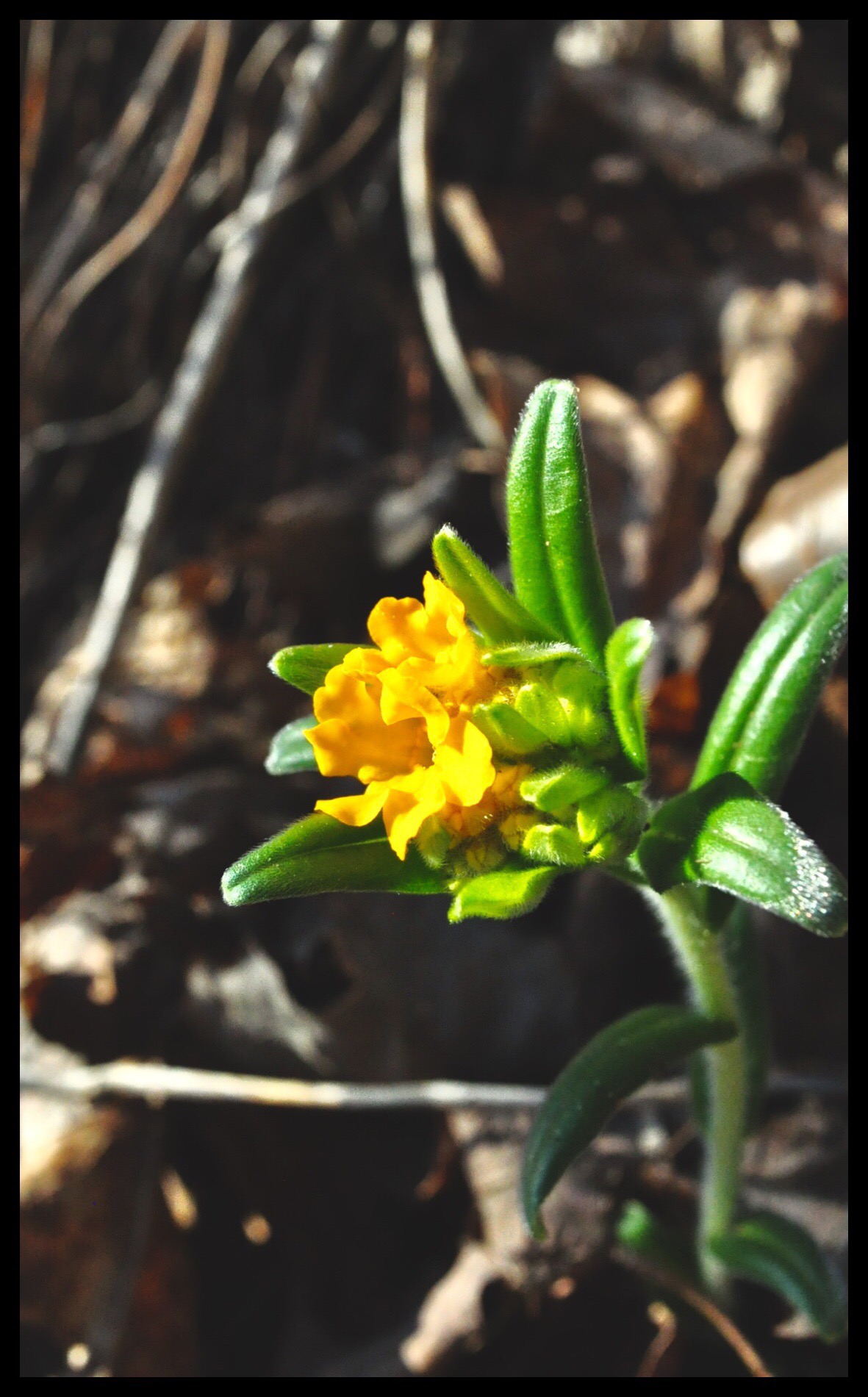
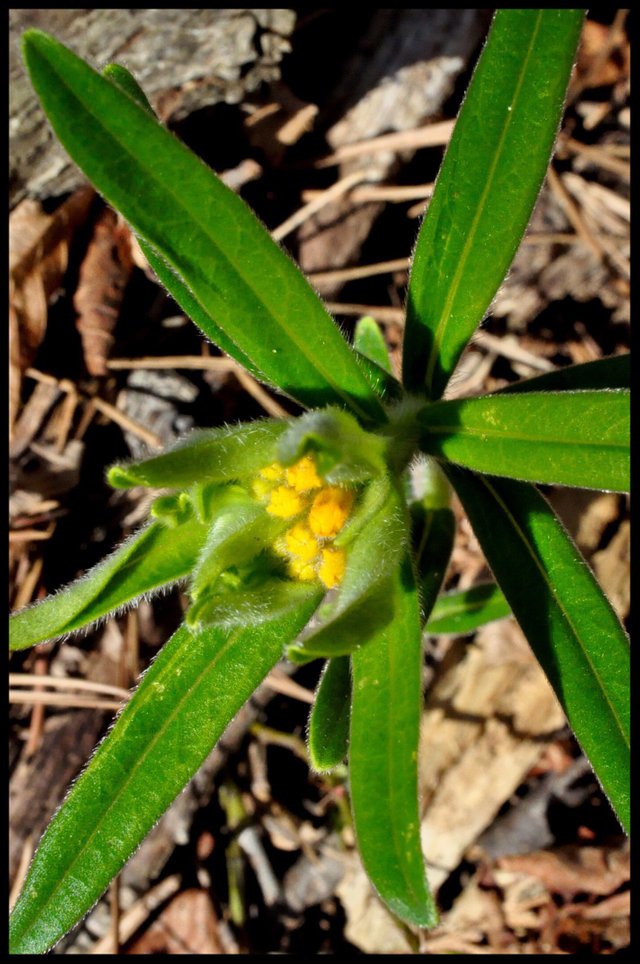
Of course, the naming of things can tell us a lot about the plants themselves, the people who named them and how they used the plants. In the Ozarks, the Native American inhabitants were mostly the Osage. I don’t know much about them as devastatingly, they are no longer in the area (were removed forcibly to Oklahoma).
This is the range of this perennial wildflower which flowers from March-May:
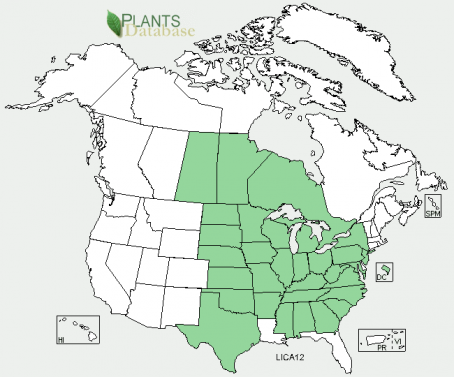
Range Map
We can gather that the root was used for dye. Ponca children used reddish root bark (of the long taproot) as a colorant, chewed with gum (from Silphium laciniatum, common name Compass Plant) to impart a red color. The flowers were used as a yellow colorant. (3)
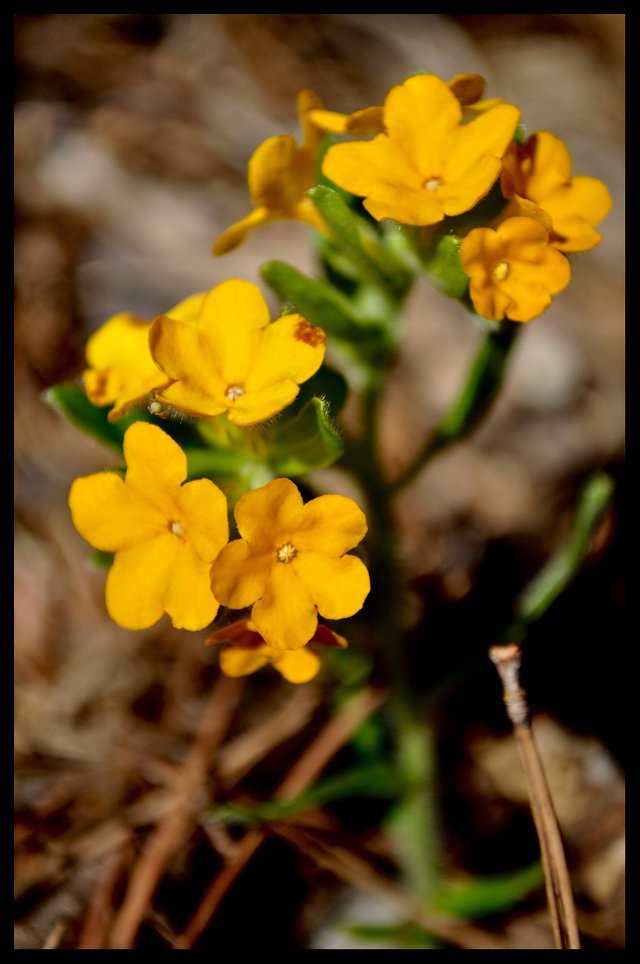
As far as medicinal uses, be careful with this plant as it contains at least 7 pyrrolizidine alkaloids which damage the liver. The only written use is from the Menominee who used the leaf tea as an external wash for fevers accompanied by spasms or on people close to having convulsions. (3)
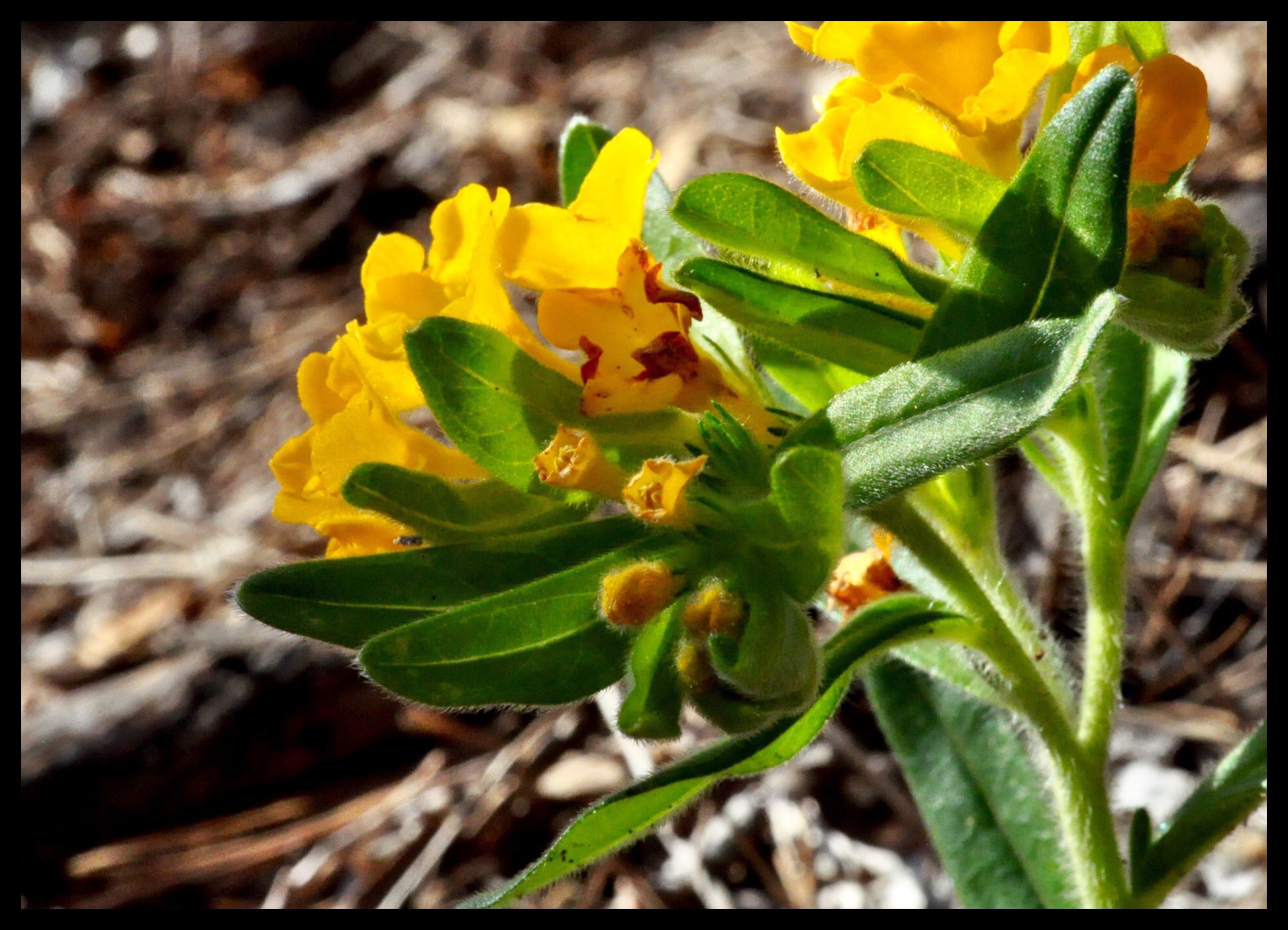
It is in the Borage family (hence the hairy stems) and these alkaloids are common in this family.
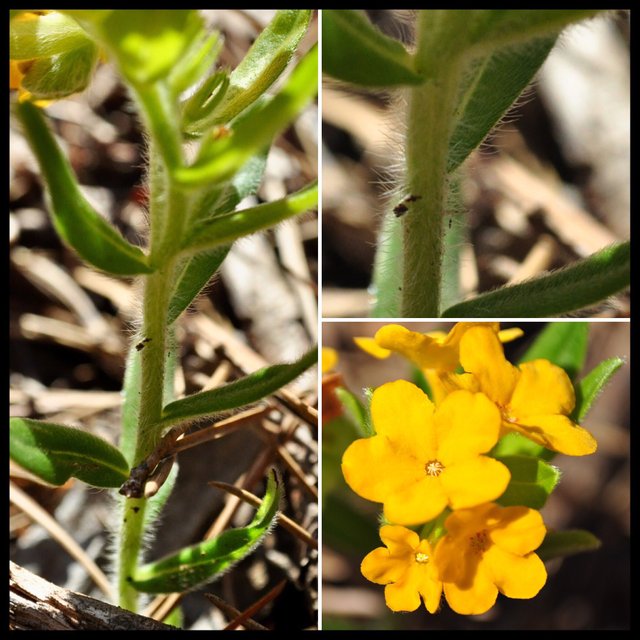
I wouldn’t advise even picking it for the root. It isn’t endangered, but certainly isn’t overtly common. Best left to its showy self and enjoyed! I’ve read it’s difficult to start from seed, but it can be done!
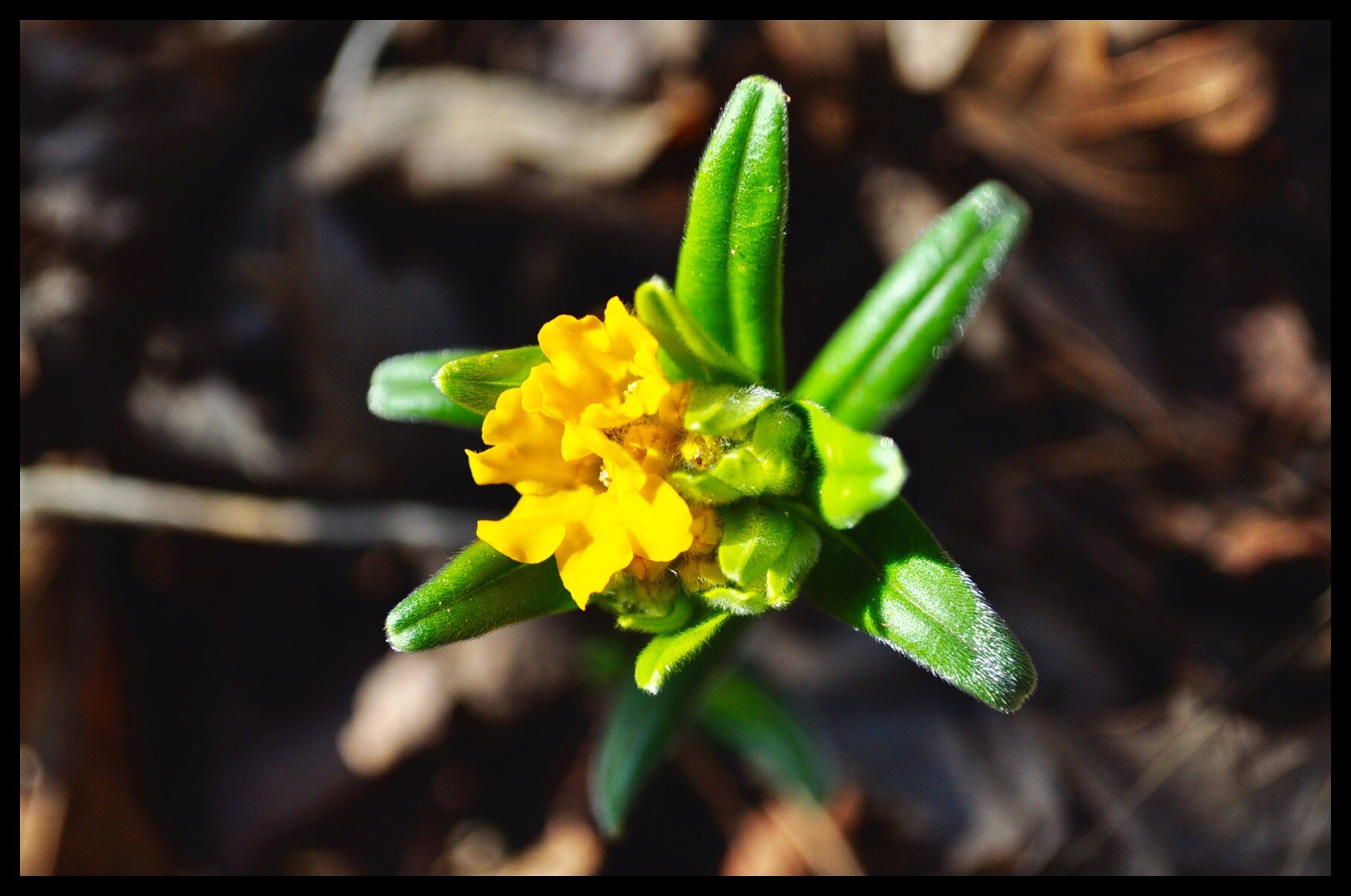
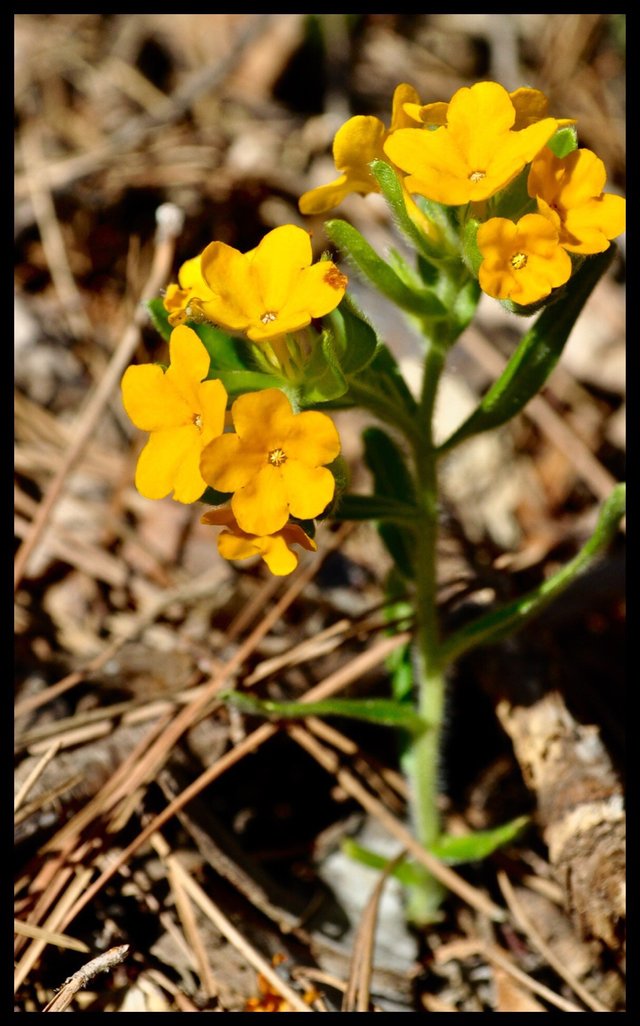
I love spring & all of its interesting growth! Look forward to more plant profiles!
Sources:
(1) https://nature.mdc.mo.gov/discover-nature/field-guide/hoary-puccoon-orange-puccoon
(2)http://www.kswildflower.org/flower_details.php?flowerID=383
(3) Peterson Field Guide to Medicinal Plants and Herbs by Stephen Foster & James A Duke
Good info on this plant! So neat to see it in the wild. I probably have encountered it while hiking and never known what it was. Kind of interesting that I can be used for dyes, I wonder how colorfast they are. Red was fairly rare in the past so anything that would give a good red dye would have been very popular.
Like so many plants, we don't know what we're looking at until we get clued in. So much is places based knowledge and much of it simply takes time.
Red dye are indeed rare, although I'm not sure how fast this one is.
Beautiful photos of it. Massachusetts is outside its range, which is why I've never seen it.
Thanks for the compliment. Too bad it's not near you. It may warrant a trip one day ;)
Maybe, some day....one can dream....
What a fascinating look at a plant I will now be on the lookout for! Thank you for sharing the regions as well as informative bit about the plant family. I am not at all surprised that this is part of the borage family... but only because of its petal pattern! The rest of the plant seems rather hearty for the borage family. As always, a wonderful post. 💓
You've been featured in the latest #LadiesofSteemit curated collection: A Humble Homestead. Keep up the great work! 🌱
Thanks dear Amelia 😘 good note on the petals 🖖
World of Photography
>Visit the website<
You have earned 5.10 XP for sharing your photo!
Daily photos: 1/2
Daily comments: 0/5
Multiplier: 1.02
Server time: 04:17:38
Total XP: 233.95/200.00
Total Photos: 35
Total comments: 49
Total contest wins: 0
Follow: @photocontests
Join the Discord channel: click!
Play and win SBD: @fairlotto
Daily Steem Statistics: @dailysteemreport
Learn how to program Steem-Python applications: @steempytutorials
Developed and sponsored by: @juliank
I always like to read posts about indigenous peoples and their plant wisdom. Nice yellow flower made perfect by nature.
Perfect flower indeed. The wisdom is inate in all of us. Just may take some uncovering ...
Ohhhh, too late to upvote and resteem! Dammit Steemit!
I love, love, love this flower! It grows in a ditch across the road from me, but it cannot be transplanted (deep taproot) and growing from seed is even harder than growing orange butterfly weed (20% viability of seeds). I want this gorgeous yellow blossom among my own prairie natives!! Thank you for posting this, @mountainjewel!
Mmmm haha! I feel ya! We also have the orange butterfly weed growing natively. Both are flowers I adore!!